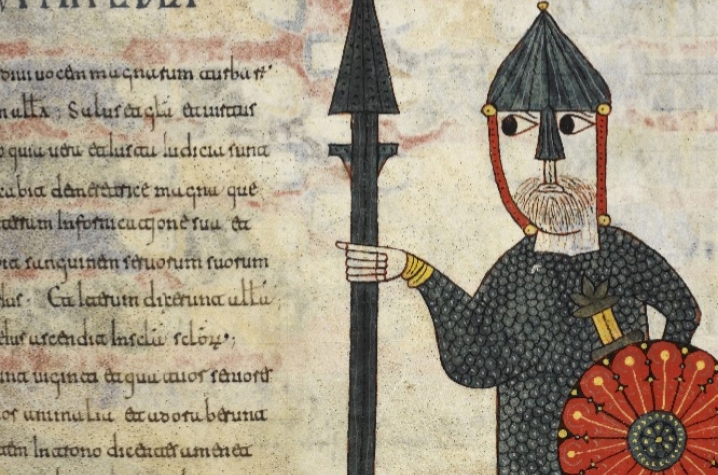UK Research Team Helps Share Ancient Manuscripts With the World

LEXINGTON, Ky. (Dec. 8, 2015) — A digital research team in the Collaboratory for Research in Computing for Humanities of the University of Kentucky College of Arts and Sciences was instrumental in the recent opening of the Hill Museum and Manuscript Library’s (HMML) public “virtual” presence.
Now, one of the world’s leading libraries for manuscript studies has a virtual library, http://vHMML.org, that the curious and studious alike can share, with images presented using the newest technology for zooming and panning high-resolution photographs.
Under the direction of Abigail Firey, UK professor of history, the team designed and built part of HMML’s virtual project that serves as exhibit space for the display of manuscript pages from different centuries and cultural traditions, each annotated with expert commentary on significant features of the script, layout, decoration and other physical or visual features.
To view some of these ancient documents, visit http://folio.as.uky.edu/ . For more about the development team, visit http://www.vhmml.org/about#INTRODUCTION .
“You can even see the follicles of the hair that was scraped from the animal skin when the parchment was prepared to be a writing-surface,” enthused Firey.
The goals for folio were to provide a “paleography album” in a digital format – free and open to all – with the detailed information that paleographers-in-training have traditionally obtained in print resources.
“The really exciting and new aspect of this project – beyond the digital delights – is that it brings together for the first time materials from so many manuscript cultures,” said Firey. “The digital format allows visitors to select and display manuscript pages from Latin, Syriac, and in the near future, Ethiopian, Armenian, Old Church Slavonic, Arabic, Kurdish, Russian, and many other cultural traditions. Visitors can also easily select the chronological period they would like to invoke, and change the dates at will to sift and sort the images. This is a unique opportunity for study of manuscripts across cultural boundaries.”
The work done at UK brought together software developers from the College of Arts and Sciences with developers from Differential, a leading, independent group that works with Meteor coding, and colleagues in UK libraries, in addition to the fundamental collaboration with HMML.
“It was such a privilege to be able to develop this project for HMML,” Firey said. “Their work in rescuing and preserving cultural patrimony in troubled regions of the world, as well as their long-standing reputation for intensive manuscript research in North America, made this project especially meaningful for us.”
The project was initiated with an Institute of Museum and Library Sciences’ leadership grant and continued with funds from the Arcadia Foundation, as well as support from the UK College of Arts and Sciences. Folio was created in a larger digital environment, called Scriptorium, that the college’s Digital Research Group is developing for collaborative research on manuscripts. In addition to supporting exhibits of manuscript pages, Scriptorium will bring large collections of digitized manuscripts to a single workspace, where scholars can transcribe texts collaboratively; share notes, documents and reference resources; and compare multiple manuscript images easily.
MEDIA CONTACT: Gail Hairston, 859-257-3302, gail.hairston@uky.edu




